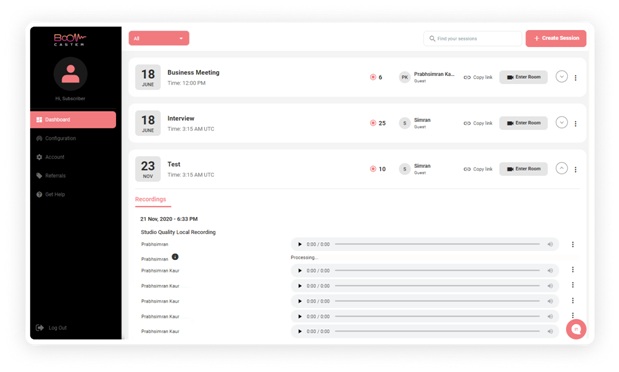Tips While Recording a Podcast
Recording a podcast is probably the most important part of the process. And yet, almost every aspiring Podcaster ignores the significance of quality and echo-free listening experience.
According to stats, three out of every four podcast viewers in the US listen to a podcast in order to learn & explore new things. And you can never have a thought-provoking conversion with bad audio quality.
The crux of the matter is that you have to support your content with high-quality audio if you want to reach the pinnacle of Podcasting. We also have to agree it is an art of practice, but there are dozens of hidden tips & tricks that you can incorporate into the process of recording a podcast.
Creating a top-notch podcast requires careful organization. Many hosts use voice-over services for podcast intros and other creative tools to keep things organized and to obtain unique content, while others invest more in hardware to enhance their production quality.
However, if you are willing to go the extra mile and invest in some really good podcasting hardware and podcast hosting software, we would suggest you do so.
These tips will help you gain a wider perspective on the big three’s of Podcasting, which are:
- Recording
- Editing
- Uploading
That said, let’s jump onto the tips
Table of Contents
#1. Eliminate The Echo
Echo is probably the biggest enemy of a Podcaster. Not only does it interfere with the listening experience of your audience, but it can also make your content look undefined and fuzzy.
So the number one thing that you should be doing is removing echo while recording. The easiest and most effective ways of doing it are keeping the recording levels minimal, staying closer to the mic, and breathing control while speaking. You can also invest in some kind of soundproof foam, which will take the echo levels down to zero.
#2. Warm Up Your Vocal Cords
There are reasons why athletes do rigorous warming-up sessions before performing an enduring activity. It prepares their muscles for all the tension that is about to put upon them.
The same goes for your vocal cords. If you are about to jump into a long podcasting session with a fellow guest, it will be wise to try out a few tongue twisters or do some kind of chanting to loosen the chords. You can also gargle with warm water 15 minutes before the session.
#3. It’s All About The Right Spot
You can buy all the expensive hardware in the world and hire the best editor. But if your recording room is next to a crowded park or road which creates constant background noises, then there is practically no way you can give your audience a satisfying listening experience.
So to start with, choose a spot wisely. Never pick a hall or a very large room as it will create a lot of unnecessary echo in the background. If you can, guard the walls with foaming covers and try to make the room as dark as possible.
#4. Record in High-Res

This is something that is not super necessary as recording in high-resolution can prove to be a little expensive sometimes. However, if you are willing to go the extra mile and invest in some really good podcasting hardware and software, we would suggest you do so.
Joe Rogan, who is probably one of the top podcasters in the world right now has mentioned the significance of recording in high-resolution in this article, and how it can help you to attract legions of viewers in a short span.
#5. Pop Filter is a Must
A small piece of equipment like Pop Filter can work wonders in terms of improving the audio quality of your podcast. It eliminates the screeching or popping sounds caused by the mechanical impact of fast-moving air on the microphone while we talk.
And most of all, it is very inexpensive and it is easily available online or any local hardware store.
#6. Always Double Record
Ira Glass, a famous radio representative and the host of the mega-famous podcast “The American Life” stated in one of his interviews how they lost a recording of a very crucial podcast and had to reshoot the entire thing.
Long story short, always double record your video podcast. While you can do it manually, you can also use software like Boomcaster in which every session is simultaneously recorded locally and through video conferencing.
#7. Add Error Ques
When you are recording an hour-long podcast, there are bound to be some hiccups along the way. Even the most trained podcasters experience this. But one thing that sets them apart is they leave ques on errors.
Whenever you make an error during the recording, you can just add a que line after it so that it will be easier to detect and trim those errors.
#8. Listen to your Guest
“Podcasting is 50% reacting to what your guests are saying” is a wonderful quote said by Marc Maron, host of WTF with Marc Maron.
When you are in the middle of a podcast, always try to make your guest feel welcomed and open about speaking their heart out. Because at the end of the day, that is what your viewers want to listen to. So try to listen to your guest, and what they are trying to express. Then add on your thoughts and go along with the flow
CONCLUSION
So whether you are an A-lister podcasting guru or an apprentice who is trying to find a way into the podcasting world, we are pretty sure you will do fine in this article that will not help you while recording a Podcast, but improve the process as a whole.

